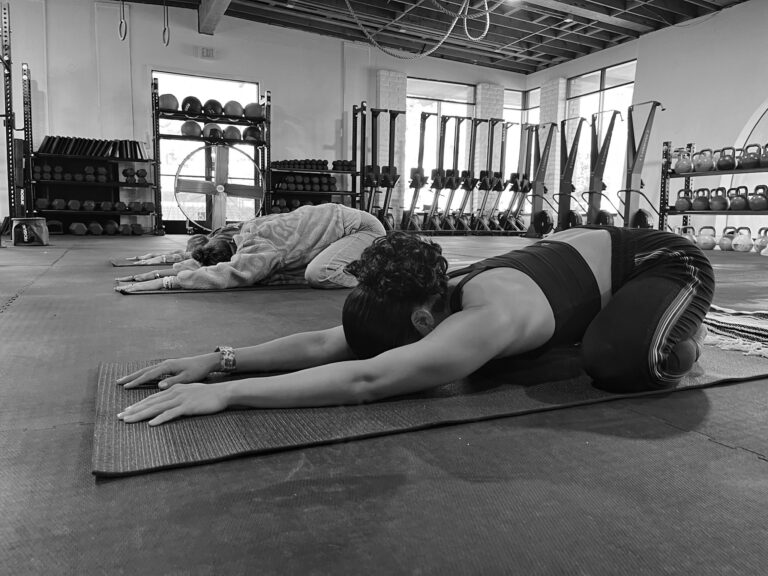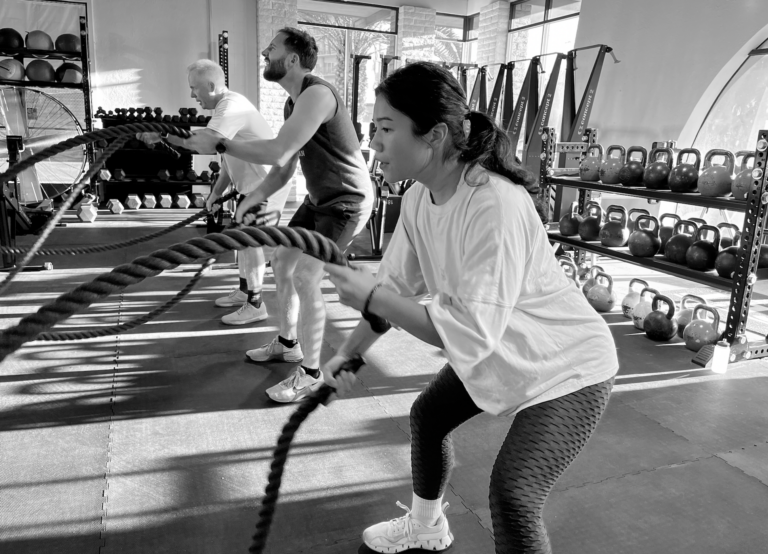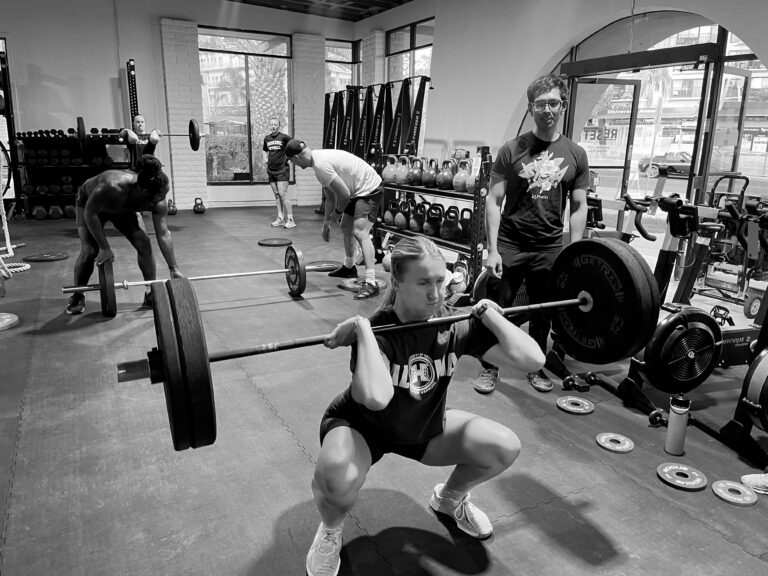Take Your Training Outside: Embrace Nature for Better Health, Fitness, and Joy
Have you ever stared out the gym window mid-workout, imagining a trail run through lush forests or a swim under open skies? Maybe you’ve dreamed of taking that strength you’ve built—those squats, deadlifts, and overhead presses—and applying it to real-world adventures like gardening, rock climbing, or simply chasing the waves at a local beach. If so, you’re not alone. There’s something about being outdoors—feeling the sun on your skin, inhaling fresh air, pushing your body against natural terrain—that awakens a deeply human part of us.
At RESET, our perspective on fitness extends beyond the walls of our facility. Yes, we value technique, consistency, and community in the gym. But we also believe that what we do here is meant to serve a more expansive purpose: living vibrantly in the outside world. Let’s delve into why taking your training outdoors can boost not just your exercise routine, but also your mental well-being, sense of wonder, and overall longevity.
Why the Outdoors Matters: The Soulful Connection
“Look deep into nature, and then you will understand everything better,” said Albert Einstein. Granted, he wasn’t specifically talking about kettlebells or hill sprints, but the sentiment rings true. Humanity has an inborn link with the earth—soil under our feet, sunlight on our face, wind rustling through leaves. In her book The Nature Fix, journalist Florence Williams cites studies showing how even brief immersion in natural settings can lower blood pressure, reduce cortisol levels, and boost cognitive performance.
This connection isn’t just about sensory pleasure; it’s also about returning to an environment our bodies evolved to navigate. We are, after all, complex animals capable of climbing, crawling, squatting, and running. Tapping into these primal movements in the great outdoors can add layers of meaning to your fitness journey that even the best gym in San Diego can’t fully replicate. Think of it as a chance to get dirt under your fingernails, maybe a scratch or two from that rocky trail, and a renewed sense of awe about what your body can do.
Scientific Backing: Moving Beyond the Treadmill
1. The Benefits of Vitamin D
Among the simplest perks of outdoor training is the sunshine. Emerging research continues to highlight the importance of Vitamin D in bone health, immune function, and mood regulation. A 2021 review in the Journal of Endocrinology pointed out that moderate sunlight exposure aids in synthesizing Vitamin D more effectively than dietary sources alone. This nutrient synergy can complement your diet, especially if your primary goal is weight loss, as hormonal balance plays a critical role in how the body metabolizes fats and carbs.
2. Mental Health and Stress Relief
Stepping outdoors for a workout—be it a jog along a forest trail or a brisk walk in the neighborhood—offers a unique kind of stress relief. According to a 2019 study in the International Journal of Environmental Research and Public Health, spending just 20 minutes in a park significantly reduced stress markers and improved overall emotional well-being. When you add purposeful exercise to that equation, the benefits multiply.
3. Engaging Multiple Planes of Motion
Working out on natural terrain—uneven surfaces, inclines, and obstacles—forces your body to adapt to diverse challenges. This can improve functional strength, balance, and proprioception in ways that a flat gym floor can’t always replicate. If you love CrossFit or intense functional workouts, try sprinting on grass or performing box jumps on a tree stump. You’ll quickly realize how outdoor training builds resilience in stabilizing muscles you might rarely activate inside.
Expanding Your Gym Gains to Real Life
One reason we push so hard within the gym is so we can play even harder outside it. We squat not just to handle more weight on a bar, but to lift heavy bags of soil in the garden without straining our backs. We practice overhead presses to hoist a kayak or set up a tent on a camping trip. And we refine our hinge movements for everything from shoveling snow to loading surfboards onto a car.
- Snowboarding: Taming powder-laden slopes demands strong legs, a stable core, and finely tuned balance. Your in-gym squats, planks, and rotational exercises translate directly to better turns and fewer falls.
- Gardening: It might not be an Olympic sport, but ask anyone who’s weeded a large vegetable patch or hauled bags of mulch: gardening is serious labor. Lifting form matters; so does endurance. If you can push through your workout’s final sets, you’ll handle an afternoon of crouching, digging, and raking with ease.
- Swimming: Whether you’re doing laps in a lake or diving into the ocean, upper-body strength, core stability, and robust cardiovascular health give you confidence in the water. Even your mental training—learning to pace yourself during gym workouts—carries over when you’re hundreds of yards from shore.
- Hiking and Trail Running: Gym-based lunges and step-ups get your legs ready for steep inclines. Deadlifts protect you from the dreaded low-back fatigue when scaling rocky climbs. Meanwhile, breathing exercises from your indoor training help you tackle higher altitudes or long distances without gassing out.
Think of these activities as a practical test for everything we drill inside. Each time you explore a new sport or outdoor hobby, you’re reaffirming the purpose of your sweaty efforts. The more you explore, the broader your skillset—and the more you discover about your potential.
The Mental Recharge: Why We All Need Fresh Air
Brené Brown once said, “You can’t always do what you’re comfortable with. Dare greatly.” Taking your exercise beyond the gym walls is one such dare. It places you in scenarios where routines might not work exactly as planned—maybe the hiking trail is slick with rain, or the sun is scorching. Surprises demand adaptability, teaching you to stay mentally sharp and flexible.
This constant adaptation fosters resilience. According to the Journal of Environmental Psychology, immersing oneself in nature while physically active can lower mental fatigue and stimulate creativity. When you’re out on a hike or a swim, you’re not just burning calories—you’re refreshing your mind.
Vitamin “Green”: The Therapeutic Side of Nature
1. Grounding Yourself
Ever heard of “earthing” or “grounding”? The concept suggests that direct contact with the Earth’s surface—whether through barefoot walks on grass or swimming in a lake—carries health benefits ranging from reduced inflammation to improved sleep. While not all claims are equally substantiated, a 2015 pilot study in the Journal of Inflammation Research indicated that grounding can affect immune responses and wound healing.
2. Sensory Stimulation
Gym equipment is consistent, but nature is full of surprises—birdsong, rustling leaves, changes in air temperature. Such sensory experiences engage the brain in ways that artificially controlled environments do not. Writer and nature advocate Richard Louv, in his book Last Child in the Woods, discusses how nature-based play addresses “nature-deficit disorder,” a phenomenon where disconnection from the outdoors correlates with attention difficulties and mood imbalances.
3. The Joy Factor
Let’s be honest—working out outside can be downright fun. Splashing in waves, navigating winding trails, or racing friends up a hill can stir that childlike glee often missing from adult life. Happiness, as many studies point out, supports better metabolism, heart health, and mental clarity—tying directly back into your fitness goals, whether you aim for weight loss or muscle gains.
Embracing the Elements—Safely
While we encourage everyone to get outside, a little preparation goes a long way in making your experience positive.
- Hydration: Outdoors, you might sweat more due to heat, wind, or humidity. Carry water or an electrolyte mix, especially if you’re venturing far.
- Sun Protection: Even short exposures can lead to sunburn. Opt for sunscreen, hats, or lightweight protective clothing.
- Layering: If you’re heading to higher altitudes or unpredictable climates, pack layers. Temperatures can shift quickly.
- Proper Footwear: Trail surfaces vary, so choose shoes that offer good traction. This is especially important if you’re new to off-road activities.
- Know Your Limits: If you’ve never hiked more than a mile, don’t attempt a 12-miler on your first outing. Gradually build your endurance, just as you would in a progressive gym program.
Building Outdoor Workouts into Your Routine
- Weekend Adventures: Dedicate one weekend day to an outdoor activity—hiking, biking, kayaking. Think of it as an extended workout that flexes different muscles than your usual routine.
- Functional Substitutions: Instead of sprints on a treadmill, find a local park with a gentle hill. Instead of rowing on an indoor machine, rent a paddleboard and hit calm waters.
- Group Outings: Invite friends from your gym or your local area near Hillcrest to join you. When you’re collectively invested in exploration, you feed off each other’s energy and accountability.
- Seasonal Rotations: Each season brings unique opportunities—snowboarding in winter, open-water swimming in summer, vibrant hikes in fall, and blossoming gardens in spring. Rotate your activities to keep excitement high.
Mark Sisson, a pioneer in the ancestral health movement, often says that variety is the spice of fitness. By periodically switching out your typical gym session with an outdoor activity, you not only challenge your body in new ways but also reignite your enthusiasm for staying active.
Community and Connection
At RESET, we see ourselves as more than just a gym. We’re a community that celebrates every step forward—whether it happens inside these walls or atop a mountain peak. We regularly organize outdoor meetups—trail runs, park workouts, beach boot camps—to remind ourselves that while we might be among the best gym in San Diego, our true playground is the world outside.
The camaraderie that forms when you collectively scale a hill or finish a mud run is often deeper than what you experience in day-to-day workouts. There’s something about facing the elements—heat, cold, wind, or water—that draws people closer together, fostering strong bonds.
Tying Outdoor Activity to Longevity
Longevity isn’t just about adding years to your life; it’s about enriching those years with purpose, vigor, and joy. Consider the “Blue Zones” research by Dan Buettner, where some of the world’s longest-living populations regularly engage in physical tasks outdoors—gardening, walking on hilly terrain, or manual labor. The synergy of low-intensity exercise throughout the day and consistent exposure to nature contributes significantly to their health and happiness.
While a structured workout in the gym can yield impressive gains in strength, cardiovascular capacity, or weight management, weaving in frequent natural movement patterns outdoors can amplify the longevity factor. Sunshine encourages Vitamin D production. Soft, uneven ground strengthens ankles and knees. Communal experiences lighten the emotional load. Together, these elements create a holistic approach that leads not only to a stronger body but also a more fulfilled life.
The Underrated Benefits of “Play”
We often associate “play” with children, forgetting that adults also need imaginative, unstructured moments of movement and exploration. Author Elizabeth Strout writes about how a spark of playfulness can reinvigorate daily life, making the ordinary seem new again. Whether it’s a spontaneous game of Frisbee or an impromptu race to the top of a hill, these playful acts switch our focus from performance metrics to pure enjoyment.
Playing outdoors also helps break mental ruts. A 2020 study in the British Journal of Sports Medicine showed that playful outdoor activities—where participants weren’t strictly measuring pace or heart rate—significantly boosted mood and adherence to exercise programs. Sometimes stepping away from the metrics can remind us why we moved in the first place: to feel alive, connected, and free.
Practical Tips to Get Outside More
- Set Micro-Adventures: Not every outdoor excursion has to be a grand trip. Schedule a 20-minute “mini-hike” or a quick swim before work if you live near water. Cumulative short bouts in nature add up.
- Combine Errands with Exercise: Need groceries? Walk or bike to the store. Planning a lunch meetup? Pick a spot within jogging distance. Integrating daily tasks with movement fosters a more active lifestyle.
- Gear Up Wisely: Invest in basics like a comfortable backpack, supportive shoes, and a reusable water bottle. Quality gear can make or break your outdoor experience.
- Engage the Senses: Try “quiet workouts,” where you minimize tech distractions (headphones, phone notifications) to soak in the natural ambiance. You might be amazed at how rejuvenating silence can be.
- Rotate Your Activities: Variety keeps boredom at bay. Swim in summer, hike in fall, snowboard or skate in winter, and cycle in spring. Keep your body guessing.
Final Word: Let Nature Be Your Playground
We’re passionate about building strong, resilient bodies that can carry us through life’s adventures. But we’re equally fervent about savoring those adventures, soaking up the experiences that remind us what a gift it is to be alive. Hillcrest might be a bustling neighborhood, but beyond city limits lie endless trails, rivers, and mountains waiting to challenge and refresh you.
Yes, the controlled environment of a workout facility is invaluable for honing technique, measuring progress, and receiving immediate feedback from coaches. But the ultimate test—and reward—of your training is what you can do outside these walls. Are you chasing a dream of being the best gym in San Diego? Great. Just remember that “best” also means transferring those gains into real-world activities that enrich your existence.
So, next time you find yourself in a conventional gym setting, let your mind wander briefly to the sunlit fields, rushing streams, or towering peaks you’ve yet to explore. Make it a goal to venture there—because the sweat you pour into your workouts is an investment in your future escapades. Get dirt under your nails. Feel the grass beneath your feet. Let the sun kiss your skin and let yourself be reminded that we are, at our core, part of this earth.
Embrace that sense of play. Stretch your limits. Relish the fresh air filling your lungs. In doing so, you not only elevate your fitness but also tap into a wellspring of vitality and connection that can’t be confined to four walls. Put the robust body you’ve cultivated to work in the garden, the ocean, or the mountains—and let these experiences shape a life rich in health, happiness, and meaning.
References
- Williams, F. (2017). The Nature Fix.
- Louv, R. (2008). Last Child in the Woods.
- Journal of Endocrinology (2021) on Vitamin D and sun exposure.
- International Journal of Environmental Research and Public Health (2019) study on park visits and stress.
- Journal of Inflammation Research (2015) pilot study on grounding.
- British Journal of Sports Medicine (2020) on playful outdoor activities.
- Brown, B. (2015). Rising Strong.
- Buettner, D. (2012). The Blue Zones.






